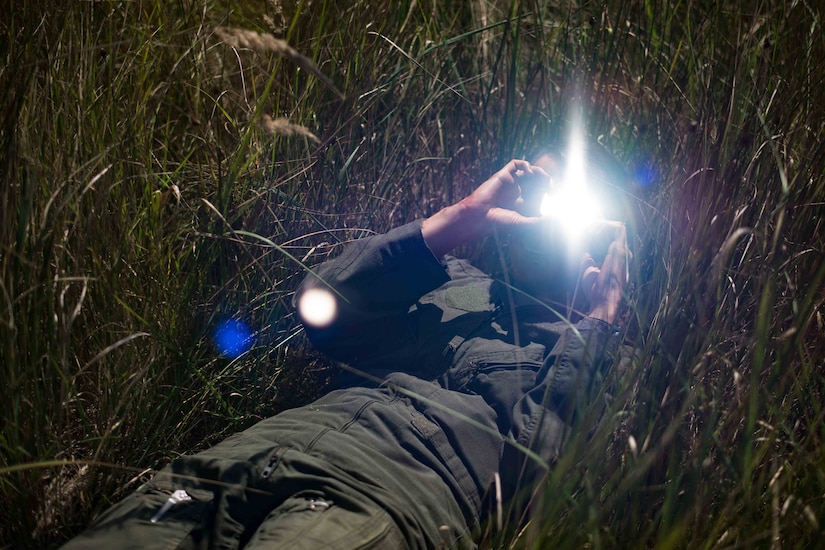By Air Force Senior Airman Devin Boyer, 86th Airlift Wing
BOLOVANI, Romania -- Survival, evasion, rescue and escape
specialists conducted training here with 37th Airlift Squadron and Romanian air
force pilots during Carpathian Summer 2018, a bilateral training exercise
designed to enhance interoperability and readiness of forces by conducting
combined air operations with the Romanian air force.
The 37th AS is part of the 86th Airlift Wing ’based in
Ramstein, Germany.
“Our purpose today is to work interoperable training with
the Romanian rescue forces,” said Air Force Senior Master Sgt. Matthew Canoy,
U.S. Air Forces in Europe-Air Forces Africa SERE functional manager. “We put
survivors on the ground, they communicate with their wingmen, and then they pass
the information to the Romanians to get rescued.”
As the pilots rummage through their gear, they pull out a
3-by-5-inch mirror and a radio. As a face-painted pilot dials in a frequency to
make communications, another takes the mirror and makes her way out to the
field, the only spot within a 2-kilometer radius beaming with sunlight.
Receiving Instructions
The sweat beads up on their faces as they listen to the SERE
experts provide instruction.
“When they fly over us, you’re going to want to aim that mirror
right at their cockpit,” Canoy said.
In the distance, the faint sound of aircraft faded in and
out.
“They’re getting close, but they keep flying away from us,”
said one pilot to another.
The pilots then made contact with their wingmen overhead using
the radio and gave them a heading.
Roaring engines echoed through the trees as the aircraft
approached their location. The C-130J soared over them as they aimed the beam
of light reflected off the mirror into their windows, hoping to be spotted.
After a few passes, the pilots overhead confirmed visuals with the crew on the
ground and gave them a set of coordinates to proceed to next.
Rendezvous Point
After traversing another thicket, the pilots reached a
rendezvous point where they called in Romanian helicopter pilots for their
rescue.
“The helicopter doesn’t have a visual of their location,”
said Air Force Staff Sgt. Christian Martin, 86th Operations Support Squadron
SERE specialist. “They know roughly where they’re at and they’re doing a search
pattern to identify where our isolated personnel are, but by using vectoring
techniques, the aircrew are able to take the sound that they hear from the
helicopter, use a heading to get them a visual of the helicopter, and then
guide them in using left and right turns.”
Minutes passed, and then a helicopter appeared.
“We have a visual,” relayed the downed pilots to the
Romanian helicopters. “Turn 90 degrees to your right.”
Each aircrew member took turns giving the helicopter pilots
directions to their location. The choppers then landed, and the crew was saved.
Air Force Capt. Jane Marlow, 37th AS pilot, said the
training was incredibly valuable.
“It provided an awesome refresher on survival and evasion,
while allowing us to do some things like helicopter vectoring and fixed wing
rescue that simply aren’t available at Ramstein,” she said.
Marlow spoke on the importance of the training and how it
essential for aircrew members.
“For those of us on the ground, the lessons learned in SERE
may be the thing that saves your crew one day, should the worst ever happen,”
she said. “For the C-130J’s in the exercise, it gave the crews the opportunity
to train as on-scene commanders.”
The multinational rescue training improved cohesion between
allied forces, Marlow said.
“Working search and rescue with the Romanians was an
incredible opportunity,” she said. “It provided us the opportunity to simulate
a realistic multinational rescue operation.”









No comments:
Post a Comment